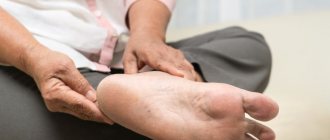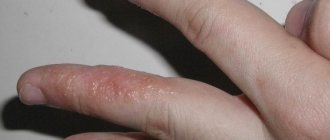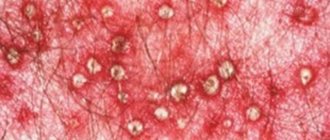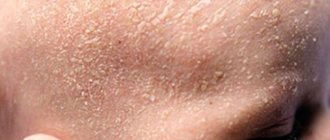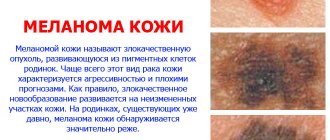Growths under the nails: photos, causes, removal
Almost all growths under the nails cause not only aesthetic, but also painful discomfort.
Many people ignore them, especially in the initial stages, until the pain begins to affect their quality of life. This is especially true for formations under the toenails, which can interfere with walking. They occur most often in adults aged 35-60 years. If you look at the statistics, in 60% of cases the cause lies in subungual warts, which can “sprout” for years. In second place is a fungus that deforms and sometimes completely destroys the nail plate. In any case, if a growth is detected, it is better to immediately begin removing it.
Growths under nails photo
Growths under the nails on the fingers and toes are usually a consequence of the development of such pathological conditions of the body:
- Infection with human papillomavirus. Neoplasms under the nails are often formed as a result of the activity of the papillomavirus, which infects more than 85% of the world's population. The unpleasant consequences of a viral infection appear against the background of severe stress, nervous strain, and weakened immunity. The occurrence of growths is also facilitated by constant trauma to the nail plate and the skin near it (bad habit of biting nails and cuticles, constant contact with chemicals, sloppy manicure, etc.). Removal of such formations is carried out using modern methods of laser or surgical correction, cryodestruction, etc.
- Fungal infection. Often the cause of the appearance of growths under the toenails or fingernails is infection by pathogenic fungal microflora. This process is usually accompanied by soreness and redness of the skin in the damaged areas, yellowing and destruction of the nail plate, and the formation of white growths under and near the nail. In advanced cases, a rash appears on the palms. Since a large number of types of fungal cultures can provoke the appearance of subungual growths, before starting therapy, a medical examination, analysis of the clinical picture, and laboratory tests are necessary. Treatment with antifungal medications is prescribed after obtaining data from a comprehensive examination of the patient.
- Formation of subungual warts. Girls who prefer to walk in high-heeled shoes or with uncomfortable lasts of non-standard shape expose their feet and toes to excessive pressure. At the same time, representatives of the fair sex may develop small growths under the nail plates on their toes - subungual warts. These neoplasms cause significant discomfort when walking and create an unpleasant cosmetic defect. You can get rid of such growths under your toenails by resorting to modern methods of cryotherapy, laser correction or surgical removal.
- Ingrown nail. Flesh-colored subungual growths can appear in places where the nail plate grows into the skin due to improper nail trimming or wearing too tight shoes. Most often, ingrowth is observed on the thumbs; at the neglected stage it is accompanied by the development of an inflammatory process, panaritium (a severe form of acute purulent inflammation). The toe irritates, hurts, swells and turns red. Such growths are removed by surgical intervention with excision of the damaged area of the nail plate and cleaning of the purulent focus (if suppuration is present). The inflammatory process can be treated with local antibacterial drugs.
- Entry of a foreign body. If the tissue of the skin on the finger around the nail swells, turns red or becomes bluish, and a painful growth is felt under the nail itself, we are most likely talking about the penetration of a foreign body (a piece of glass, a splinter, etc.). If the foreign object is not removed in a timely manner, suppuration of the damaged area may begin, followed by sepsis. This is why a finger on your hand may itch. To prevent dangerous complications, you need to seek help from a surgeon who will disinfect the skin, open the wound and remove the foreign body.
Often the reason for the formation of growths under the fingernails and toenails is a simple disregard for the rules of personal hygiene. Lack of proper care and timely cleansing of the skin creates favorable conditions for the uncontrolled growth of pathogenic microorganisms, accompanied by inflammation and the appearance of dense subungual growths.
In some cases, formations under the nails appear due to excess weight or against the background of the development of psoriasis, which provokes deformation of the nail plates.
If you detect various growths located under or near the nails, you should not attempt to carry out procedures to remove the growths at home without a doctor’s prescription.
This approach is fraught with skin infection and a significant aggravation of the problem.
Loading…
Source: https://nakozhe.com/narostyi-pod-nogtyami.html
Nail fungus
One of the serious reasons why problems arise with toenails is fungal infection. The infectious disease onychomycosis is characterized by the rapid spread of pathogenic microorganisms. In its advanced form, the pathology requires long-term treatment. The fungus multiplies rapidly in conditions of high temperature and humidity. The causes of pathology on the legs are:
- failure to maintain personal hygiene in the pool, sauna;
- using someone else's shoes;
- work in rooms with unfavorable conditions;
- age-related changes;
- diseases of the endocrine system.
The development of a fungal infection is provoked by problems with blood circulation in the lower extremities, metabolic disorders, and hormonal imbalances. The main causative agents of infections are three types of fungi; each has its own symptoms of the disease and requires a special approach to treatment. Damage to toenails is caused by:
- mold microorganisms;
- candida – yeast fungi;
- dermatophytes.
Signs of toenail fungus
An infection caused by pathogenic fungal microorganisms has pronounced symptoms. Signs of the disease depend on the type of pathogen, but there are general characteristics of pathological changes. These include:
- the appearance of thickening;
- cracking;
- change in color of the nail plate on the toes;
- fragility;
- nail splitting;
- damage to the surrounding skin with redness, burning, itching.
In the early stages of the disease, the plates become dull, their shine is lost, and yellowish spots appear. With timely contact with a dermatologist, a quick cure occurs. As the fungus on the feet progresses, the following is observed:
- change in surface color to darker - brown, black;
- the appearance of tuberosity;
- plane deformations;
- redness of the cushion;
- tissue inflammation;
- complete destruction of the nail plate.
Treatment
It is a mistake to think that a fungal infection on the feet will go away on its own. It is unacceptable to self-medicate. Only a dermatologist, having identified the pathogen and made the correct diagnosis, can prescribe medications and a regimen of use. To combat fungal pathology on the feet, use:
- local external medications in the form of sprays, ointments, solutions;
- antifungal drugs for oral administration – tablets, capsules;
- Traditional medicine recipes - baths, compresses, lotions.
It is very important to consult a specialist when the first symptoms of nail disease appear. This will help solve the problem in a short time. Dermatologists prescribe:
- at an early stage of the disease - application of Fukortsin liquid, use of varnishes Ciclopirox, Lotseril;
- if the lesion develops - Terbinafine ointment, Ketoconazole tablets;
- to improve nutrition and activate blood circulation - physiotherapy;
- in advanced cases - removal of the nail.
Emptiness under the nails (onycholysis): causes, treatment, photo
Some girls may suffer from a disease such as onycholysis - emptiness under the nails. The fact is that nails actively grow more in the female part of the population than in men. The situation gets even worse in the summer. Scientists also noticed that nails on the working hand grow faster than on the other hand.
The plates are the very mirror of our body, by which more than twenty diseases can be identified. Therefore, you need to constantly monitor your nails, and if there is something wrong with them, then immediately put them in order. In addition, the appearance of painful nails will not be the most pleasant surprise for strangers and loved ones. It's just unpleasant to look at.
Main causes of the disease
If the void under the nails is noticed only at the initial stage, then the detachment of the plate will be insignificant and barely noticeable to a prying eye. But if you start onycholysis, then things can get to the point where the nail is completely lost. And this is a huge stress for the whole body and person.
The reason is fungal infections, which can be spread under the nails in a variety of ways. Therefore, the specialist you need to contact is a dermatologist.
It is he who will be able to prescribe appropriate treatment, send for tests and give useful advice on prevention.
Since the disease develops very quickly and covers the entire space between the fingers, contacting a specialist as soon as possible will help cope with the fungus.
But there are other reasons that are not so common: taking antibiotics, herbs, exposure to drugs, powders, and so on. Because the nature of the formation can be so varied, it is important to contact a specialist as soon as possible. Only he can prescribe the correct treatment so that the emptiness under the nails goes away.
Nail diagnostics
Diagnosis occurs by examining the nail plate. The fact is that it can show a lot and tell what a person is sick with.
This technique is especially popular in China, where many folk recipes and innovations in the field of medicine come from.
This is explained by the fact that the channels on the fingers are closely connected with the organs, which is why nails can provide such detailed information about human health. Emptiness on the fingernails will already indicate problems.
There are even connections that have already been made. The thumb is the skull and brain, the index finger is the lungs, the middle finger is the intestines, the ring finger is the kidneys, the little finger is the heart. It is believed that one should read precisely for such associations.
Despite the fact that it looks quite stupid due to its simplicity, this diagnostic technique has already worked successfully in several countries. By studying nails, you can identify many diseases and begin treatment.
Emptiness under the nails can begin with such harbingers of the disease as dots, spots, stripes. So if there are such traces, it’s worth thinking about starting treatment or prevention.
It will take a lot of time and effort to get rid of the disease. This is due to the fact that it is necessary to cure not only the nails, but also the entire body. Even in order to strengthen the immune system, if someone does not want to believe in the nail diagnostic method. Stomach, heart, nerves, skin, vascular system - all these organs and systems can affect not only a person’s condition, but also his nails.
Diseases that can be identified by nails
First you need to understand what healthy human nails look like. These are matte plates that are slightly shiny and smooth to the touch. The bed should be visible through them. Also, the surface must be intact and durable. In addition, the connection with the side bolsters and the stock will be assessed.
If the bed is blue in color, then the problem lies in the heart or lungs. A diseased heart or poor circulation can instantly give a blue tint to the plates.
If the plates are white and flat, the reason lies in anemia. This can be corrected with vitamins and iron. White tips - kidneys are sick. Milky coloration means liver cirrhosis is progressing.
Discolored nails – allergies and stress.
Onychorrhexis is a disease in which the ends become brittle. This is also a signal that something is wrong with your body. There can be many reasons, including ailments such as lichen, psoriasis, baldness or eczema. It is necessary to contact specialists so that they can understand what is wrong and how to treat the reason that makes the nails look like this.
Therapeutic methods
To treat onycholysis, so-called restorative therapy is used. As a rule, this includes a number of vitamins and nutrients: iron, calcium, gelatin, vitamins A and B. After the body is strengthened, it will be possible to move on to treating the nails themselves. Potassium permanganate baths, heliomycin ointment, and syntamycin emulsion are used.
To prevent infection by other microbes or fungi, you need to maintain hygiene of your hands and feet, and constantly clean your nails. Also, do not come into contact with chemicals, powders, detergents, and so on. It is enough just to wear rubber gloves, which will prevent the substance from penetrating the skin and nails.
If you go to the doctor in a timely manner, the emptiness under the nails of your big toes can be treated quite simply.
ethnoscience
Doctors often supplement their course of treatment with something folk, which definitely won’t make things worse. Oil wraps and compresses are what will help improve the effect of the entire treatment procedure. But in any case, first consult with a specialist so that he gives his permission for additional treatment methods.
What not to do?
The most important rule for this disease is not to be cold-blooded about your health. If you let it progress, then at best the treatment process will simply be delayed; at worst, nails may fall out. In addition, the progress of other diseases that caused such a reaction in the body will continue.
Results
To get rid of the emptiness under your toenails and fingernails as quickly as possible, you just need to follow all the prescriptions of your doctor, who has already cured dozens of people from onycholysis. In order to prevent the fungus from developing subsequently, it is necessary to constantly monitor the condition of the nails and do a pedicure.
After all, the skin, dirt, and tissue that accumulate under the nails can give such an effect. It is also worth protecting yourself from contact with chemicals and detergents using rubber gloves. This will help maintain the softness of the skin and its healthy color. Onycholysis on the legs is identical to what occurs on the arms.
Girls should not constantly cover their nails with varnish so that they can breathe. If a person is affected by a disease such as onycholysis, photos taken before and after treatment will be very different to the naked eye. In addition, strengthening the entire body will be a good preventative measure. Sports activities, contrast showers, jogging, fruits and vegetables are suitable for this.
It is possible to protect yourself from emptiness under your toenails and fingernails. To do this, you should have the necessary information and follow recommendations for maintaining your health. It should be noted that with a disease such as onycholysis, it makes sense to take photos of the affected nails in order to be able to evaluate the results of treatment.
Source: https://FB.ru/article/267196/pustota-pod-nogtyami-oniholizis-prichinyi-poyavleniya-lechenie-foto
Deformation of the big toe nail
The disease, which is characterized by changes in the nail plates on the toes, has many causes. All of them are associated with external and internal influences. The appearance of deformation is provoked by the following factors:
- injuries, mechanical damage;
- exposure to tight shoes;
- improper care - pedicure with severely cut cuticles;
- panaritium - nail beetle;
- changes in the structure of the plate under the influence of diseases;
- fungal infections - mycoses;
- exposure to chemicals;
- poor circulation in the legs.
To eliminate deformation of the nail plates, it is necessary to establish the cause of the pathology. Treatment of the disease that caused the symptoms helps to get rid of its manifestations forever. Signs of deformation are closely related to the causes of the disease:
- stratification – lack of B vitamins, calcium, thyroid problems;
- stripes, scallops - consequences of stress, heredity;
- curvature – age-related changes, incorrect shoes;
- thickening of the nail plate – fungal infection;
- atrophy is a consequence of chronic diseases;
- the presence of pinpoint depressions – eczema, psoriasis.
Various nail disorders require close attention and adequate timely correction. After all, sometimes alarming symptoms indicate the development of diseases.
Look at your nails. These 12 abnormalities can tell you a lot about your health
The nails of a healthy person are smooth, shiny, pale pink in color, with a pronounced whitish hole at the base. At the same time, the nail plate is constantly renewed, growing by about one millimeter in a week.
irecommend.ru
With age, the nail plate thickens and becomes more brittle. This is part of the body's natural aging process. Fragility is also characteristic of the nails of pregnant women. But within six months after giving birth, everything usually returns to normal.
It is acceptable if nails break due to a lack of vitamins or turn yellow due to poor-quality varnish. Sometimes the nail plate can even turn black and fall off if the finger is pinched or hit.
In a healthy person, fingernails are completely restored within 4-6 months, and toenails - within 6-8 months.
But there are persistent pathologies that we often don’t even pay attention to. But in vain. Some changes in the shape, color and texture of nails, as well as the skin around them, may indicate disturbances in the functioning of internal organs and the presence of a variety of, sometimes serious, diseases.
Excessive fragility
yalmashop.ru
If the nail breaks just beyond the edge of the finger, the body is likely deficient in vitamins A, E and C, as well as iron and zinc. Sometimes fragility can be a consequence of thyroid disease and a harbinger of diabetes.
White spots
polzapost.ru
People consider them a good omen, but in medicine this pathology is called leukonychia. Microscopic air bubbles form between the layers of the nail plate, which look like white dots and stripes on the surface.
Leukonychia can be spotty (a couple of spots on several nails) and total (when the entire plate is affected). The reasons are varied: from injuries and unbalanced nutrition to exhaustion of the nervous system and heart failure.
Point depressions
dingyue.nosdn.127.net
The shape and color of the nails look as usual. But if you look closely, the nail plate is riddled with tiny indentations (as if poked with a needle). Doctors even have such a term - thimble-shaped wear.
This is almost always a sign of psoriasis. Sometimes eczema or arthritis can manifest themselves this way.
If you discover this or any other nail pathology, you should not self-medicate. The first thing you need to do is make an appointment with a therapist and/or dermatologist and get tested. Only a professional doctor and clinical research can give an accurate answer as to what is the cause of the pathology. Maybe this is some stage of psoriasis, or maybe just a malfunction in the thyroid gland or gastrointestinal tract.
Olga Aleynikova, nurse, manicurist and pedicurist
Large or small lunulae
ofigenno.com
Lunules or craters are a light crescent moon at the base of the nail. They should occupy about a third of it and be clearly visible.
Athletes and people involved in heavy physical labor have holes that are too large. Sometimes they can indicate malfunctions of the heart and blood vessels, low blood pressure.
Small lunulae that barely peek out from under the cuticle can be a sign of a lack of vitamin B12 and iron, as well as problems with blood circulation.
Transverse grooves
dermline.ru
These are the so-called Bo lines. The pathology of the nail plate in the form of transverse lines up to one millimeter deep was first identified by the French military surgeon Joseph Honore Simon Beau.
Beau's lines are formed due to damage to the matrix of the nail plate. When it lacks nutrition, the chemical composition of the nail changes and its plate becomes deformed. Most often this happens due to strict diets bordering on starvation.
Also, these injuries can be mechanical (when the nail is hit in the area of the hole) or toxic in nature (due to potent drugs or chemotherapy). Sometimes Bo lines can appear against the background of cardiovascular diseases, fungal and other infections.
Longitudinal grooves
womens-blog.ru
If for the elderly such a change in the relief of the nails can be considered the norm, then for people under 50 years of age protruding vertical stripes most likely indicate a lack of B vitamins and microelements (zinc, iron, magnesium).
This could also be the result of a bad manicure or pedicure: the cuticle was pushed back too much and the root of the nail was damaged. But in these cases, only a few vertical stripes stand out.
If more than 25% of the nails are affected, the health of the internal organs should be checked. First of all, the cardiovascular and digestive systems.
If the pathology is not infectious in nature, you know its cause and have already started treatment, then you can give the damaged nails an aesthetic appearance. Any good salon offers nail spa treatments. For example, for nutrition and hydration, you can do Japanese manicure (P-Shine) or paraffin therapy. For smoothness - grinding and polishing the nail plate.
Olga Aleynikova, nurse, manicurist and pedicurist
Spoon nails
el-corazon-ek.ru
This is koilonychia, that is, a deformation of the nail plate in which its center bends and the edges are turned up. This does not cause discomfort, the color and smoothness are preserved, but it looks ugly.
The easiest way to identify koilonychia is to drop water on the nail. Did the drop roll freely? Everything is fine. Is the drop stuck in the groove? There is reason to think.
Most often, concave nails are a consequence of a lack of iron in the body and endocrine disorders. Acquired causes of koilonychia also include trauma, contact with chemicals and sudden temperature changes.
In addition, spoon-shaped nails can occur due to gene mutations and be inherited.
Drumsticks
dermline.ru
Another name is the fingers of Hippocrates. This is a symptom in which the nail plates thicken and become like watch glasses. Moreover, if you look at the finger from the side, the angle between the rear nail fold and the nail plate exceeds 180°.
adst.mp.pl
Drumsticks are always a sign of a serious illness. They can manifest themselves in diseases of the lungs (from tuberculosis to cancer), heart and blood vessels (heart defects, endocarditis and others), gastrointestinal tract (ulcerative colitis, Crohn's disease and others).
Nail peeling
zdnogti.ru
In medicine, this is called onycholysis - a violation of the connection between the nail and the nail bed, when a void forms between them and the nail plate changes color.
In 60% of cases the cause is injury. When struck, the vessels in the dermis are compressed, the nutrition of the nail is disrupted, and its chemical composition and elasticity change. Another 30% is due to fungal diseases and allergic reactions. The remaining 10% of onycholysis develops due to systemic somatic diseases.
When the nail plate begins to rise up, it no longer covers the nail bed that nourishes it. This may lead to infection. If you hit yourself or had some contact with chemicals and suddenly notice that your nail begins to peel off, you need to use antifungal and regenerating agents as quickly as possible.
Olga Aleynikova, nurse, manicurist and pedicurist
Half and half
media.caak.mn
This is the name of the syndrome in which half of the nail plate is white, and the half, closer to the tip, is brownish.
The most likely cause is kidney failure, which causes the number of blood vessels under the nails to increase and become visible through the nail plate.
Also, “half” nails occur in HIV-positive people and those who have undergone chemotherapy.
White, yellow and bluish nails
A change in the color of the nail plate is a signal that it’s time to take care of your health.
If your nails suddenly turn white, you should check your digestive and cardiovascular systems and pay special attention to the liver. A yellow tint is also caused by liver diseases, as well as pathologies of the endocrine and lymphatic systems. Blueness indicates a lack of oxygen, low hemoglobin levels or poor circulation.
Single dark line
kratko-news.com
Most often, a black stripe appears on the nail plate due to injury or malfunction of the digestive system. And for some peoples this is a feature of natural skin pigmentation.
But if you eat normally, haven’t hit yourself anywhere, and suddenly blackening appears on your nail, it’s better to consult a doctor. This may be a symptom of melanoma, a malignant skin cancer.
How to keep your nails beautiful and healthy
Here are the general recommendations given by Olga Aleynikova.
Proper nutrition, healthy sleep and exercise should be the default. Regularly inspect your nail plates and take care of your hands.
- Get a manicure and pedicure. Trim or file the free edge of the nails in a timely manner, and treat the cuticle.
- Don't bite your nails.
- Wear gloves when working with chemicals and when digging in garden beds.
- Take vitamins.
- Regularly smear your hands and nails with nourishing cream.
- Don't wear tight shoes, don't stick your fingers in cracks, and be careful with the hammer.
When going to places with large crowds of people, use liquid gloves (this is an emulsion). The risk of contracting infectious diseases through your hands is now very high.
If you see signs of illness on the nail plates, use antifungal agents and regenerating drugs. If the pathology is persistent, be sure to get tested and go to the doctor.
Source: https://Lifehacker.ru/nogti/
Prevention
To prevent the formation of dryness and cracks under the nails, it is necessary to constantly use moisturizing and nourishing products for the skin of the hands. It is also additionally recommended to carry out procedures aimed at skin care. To do this, you can use traditional medicine recipes. In spring and autumn, experts advise taking vitamin complexes for prevention purposes. Such activities significantly help maintain a healthy color, as well as the softness of the skin under and around the nails.
Skin has grown under the nails, what should I do? Growths under nails photo
Many of us ignore the first signs of any problems with our nails. I always think maybe it will go away on its own or it’s no big deal at all – I’ll cut it off with nail scissors.
Very often, growths under the nails are harbingers of fungal diseases, which are best identified in the early stages, since advanced forms take a long time to treat and are not always successful.
If the growths are accompanied by redness and pain, then there is a high probability of an inflammatory process characteristic of pustular diseases. But let's talk about everything in order.
Causes of growths under the fingernails and toenails
- Fungal skin disease - in the early stages, the skin near the nail plate is affected.
It feels like a rough patch of skin to the touch, which is very often cut off until deformation of the nail is noticed; - An ingrown toenail is accompanied by pain, partial detachment of the nail plate, purulent discharge and severe itching.
Most often found on the big toe. The size of the growth rarely exceeds a small pea; - – characterized by characteristic deformation of the nail plate.
More often found on the hands. Along with yellowing and destruction of the nail, small flesh-colored growths appear underneath them; - – in this case we are talking about warts that like to be localized under and next to the nails.
They rarely reach the size of a match head. The growths themselves are white and rough to the touch. Painful sensations are accompanied only in case of injury.
It is also impossible to exclude the possibility of a foreign body getting under the skin, which can cause a painful growth to appear near the nail. Another common cause is trauma to the nail plate. After its deformation or detachment, the appearance of small growths may be observed.
What are toenail diseases?
A sign of good health is a smooth, shiny, pale pink toenail plate. Unfortunately, damage occurs at any age and is a symptom of serious problems in the body. The situation is provoked by:
- infectious fungal infections;
- diseases caused by disruption of the endocrine and nervous systems;
- birth defects;
- injuries;
- heredity;
- eating disorders;
- poor quality care;
- smoking;
- infectious, skin diseases;
- chemical substances;
- avitaminosis.
Dermatologists identify the main diseases of the toenails. One group is caused by fungal and bacterial infections. The other part includes pathologies:
- dyschromia – change in the color of the nail plate;
- nail ingrowth into the skin;
- injury;
- splitting, delamination of the surface;
- deformation, appearance of grooves;
- nail dystrophy;
- formation of hematomas;
- change in shape and size;
- plate rejection.

